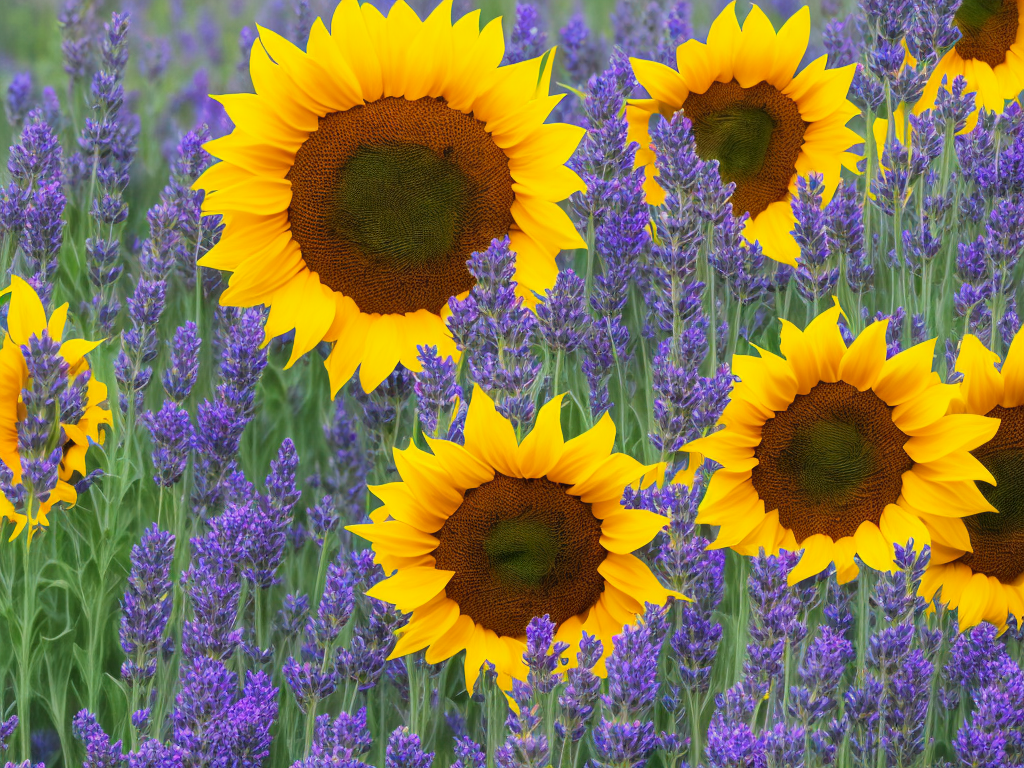
Plants are incredibly diverse - they come in different sizes, shapes, colors, and forms. Two of the most commonly used terms to classify plants are annual and perennial. These terms are important for gardeners and landscapers to understand, as they have an impact on how plants are grown, maintained, and used in landscaping projects.
In general, the difference between annual and perennial plants lies in their lifespan. Annual plants complete their life cycle in one growing season, while perennial plants live for multiple years. However, this distinction doesn't tell the whole story; there's a lot more to these two types of plants than just their lifespan. Let's take a closer look at annual vs. perennial plants and explore what makes them different.
Annual Plants
Annual plants complete their life cycle in one year or growing season. They germinate from seeds, grow, flower, produce fruit or seeds, and then die off, all within the same year. Annual plants can be further classified into two types - hardy and half-hardy.
Hardy Annuals: These annuals tolerate low temperatures and can survive in colder environments. They are usually sown in late summer or early spring and can flower in late spring or early summer. Examples of hardy annuals include sweet peas, calendula, marigold, and poppies.
Half-hardy Annuals: These annuals cannot tolerate low temperatures and need a warm environment to grow. They are usually sown in early spring and flower in late summer or early fall. Examples of half-hardy annuals include petunias, impatiens, and begonias.
Annual plants have some advantages over perennial plants. They are usually faster-growing and easier to care for. They don't require much maintenance or attention and can provide a lot of color and variety in a garden or landscape. They are also less likely to spread aggressively or become invasive, as they die off at the end of the year.
Because annual plants have a short lifespan, they are often used as bedding plants, in hanging baskets or containers, or in temporary displays. They can be planted in a variety of places, such as flower beds, window boxes, or along borders or edges. They are great for adding seasonal color and filling in gaps in a landscape or garden.
Perennial Plants
Perennial plants are plants that live for more than two years. They grow, flower, produce seeds, and then die back to the ground at the end of each growing season. However, their roots and stems remain alive underground, and new growth emerges in the following season.
Perennials can be further classified into two types - herbaceous and woody.
Herbaceous Perennials: These perennials die back to the ground every year, but their roots remain alive. They can be grown for their foliage, flowers, or both. Examples of herbaceous perennials include hostas, daylilies, daisies, and asters.
Woody Perennials: These perennials have woody stems and can grow into trees or shrubs. They can be evergreen or deciduous and are often grown for their foliage, flowers, or fruits. Examples of woody perennials include roses, hydrangeas, lavender, and clematis.
Perennial plants can have several advantages over annual plants. They tend to be more sustainable and long-lasting, providing ongoing beauty, color, and structure to a garden or landscape. They can also be more hardy and resistant to pests and diseases, making them easier to care for over time. Additionally, because they come back year after year, they can save time and money compared to annual plants, which need to be replaced every year.
Perennial plants can be used in a variety of ways in landscaping projects. They can be used as borders or hedges, foundation plants or specimens. They can also be planted in groups or clusters to create focal points or design elements. Many perennials are also great for attracting pollinators, such as butterflies and bees, making them an essential component of eco-friendly garden design.
Factors to Consider
When choosing between annual and perennial plants, there are a few important factors to consider. Here are some of the key considerations:
- Climate: Some plants are better suited to certain climates than others. Make sure to choose plants that are adapted to your local environment.
- Sun and Shade: Some plants require full sun to grow, while others prefer partial or full shade. Make sure to choose plants that are right for the amount of sunlight your garden receives.
- Soil Type: Some plants require specific soil types, such as acidic, alkaline, or well-draining soil. Make sure to choose plants that are well-suited to the soil conditions in your garden.
- Watering Needs: Some plants require more water than others. Make sure to choose plants that can tolerate the amount of water your garden receives.
- Maintenance: Some plants require more maintenance than others, such as regular pruning or deadheading. Make sure to choose plants that you're willing and able to care for.
- Design Goals: Consider your overall design goals when choosing plants. Do you want a lot of color and variety, or do you prefer a more cohesive and uniform look? Do you want plants that attract wildlife or plants that are easy to maintain?
Conclusion
In summary, the difference between annual and perennial plants lies in their lifespan. Annuals complete their life cycle in one year, while perennials live for multiple years. However, there are many other factors to consider when choosing between annual and perennial plants, such as climate, sun and shade, soil type, watering needs, and maintenance. By understanding these factors and choosing the right plants for your garden or landscape, you can create a beautiful and thriving outdoor space that provides ongoing enjoyment and beauty.
 Self-Instruct
Self-Instruct